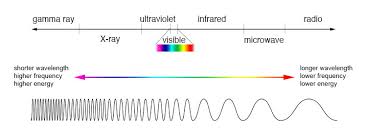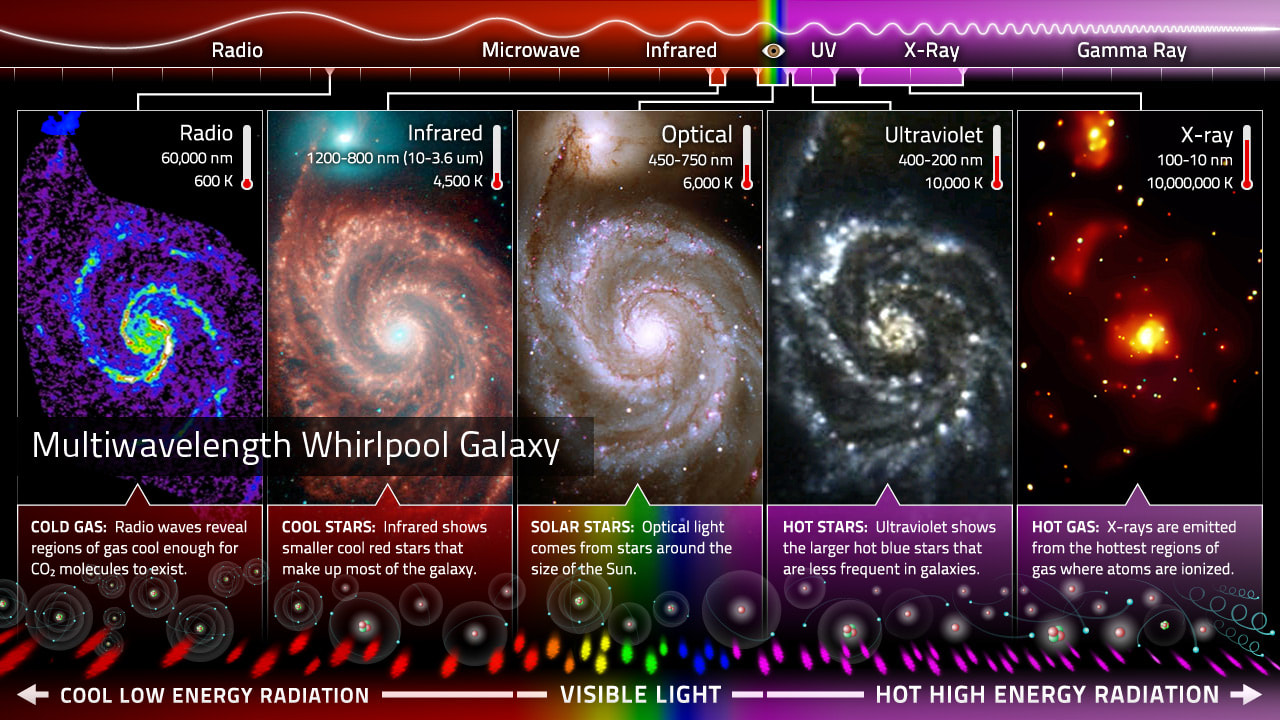Electromagnetic SpectrumThe electromagnetic spectrum describes the range of electromagnetic waves placed in order of increasing frequency. At one end of the spectrum are radio waves, which have a very low frequency and long wavelengths. At the other end of the spectrum are high-frequency, short wavelength gamma rays. All electromagnetic waves travel at the same speed--the speed of light. They differ in the amount of energy they transfer, called electromagnetic radiation. Lower-frequency waves like radio waves emit less electromagnetic radiation than do higher-frequency rays like gamma rays.
|
Website Links |
Wave Behaviors
The Electromagnetic Spectrum-NASA Astronomical Images in Different Wavelengths (this link has difficulty launching, examine the image below to help answer this question) Tour the Electromagnetic Spectrum Electromagnetic Spectrum- Waves and Individual Sections Electromagnetic Spectrum Data Table Electromagnetic Spectrum Diagram The Electromagnetic Spectrum: Frontline PREZI- sections of the EMS |


